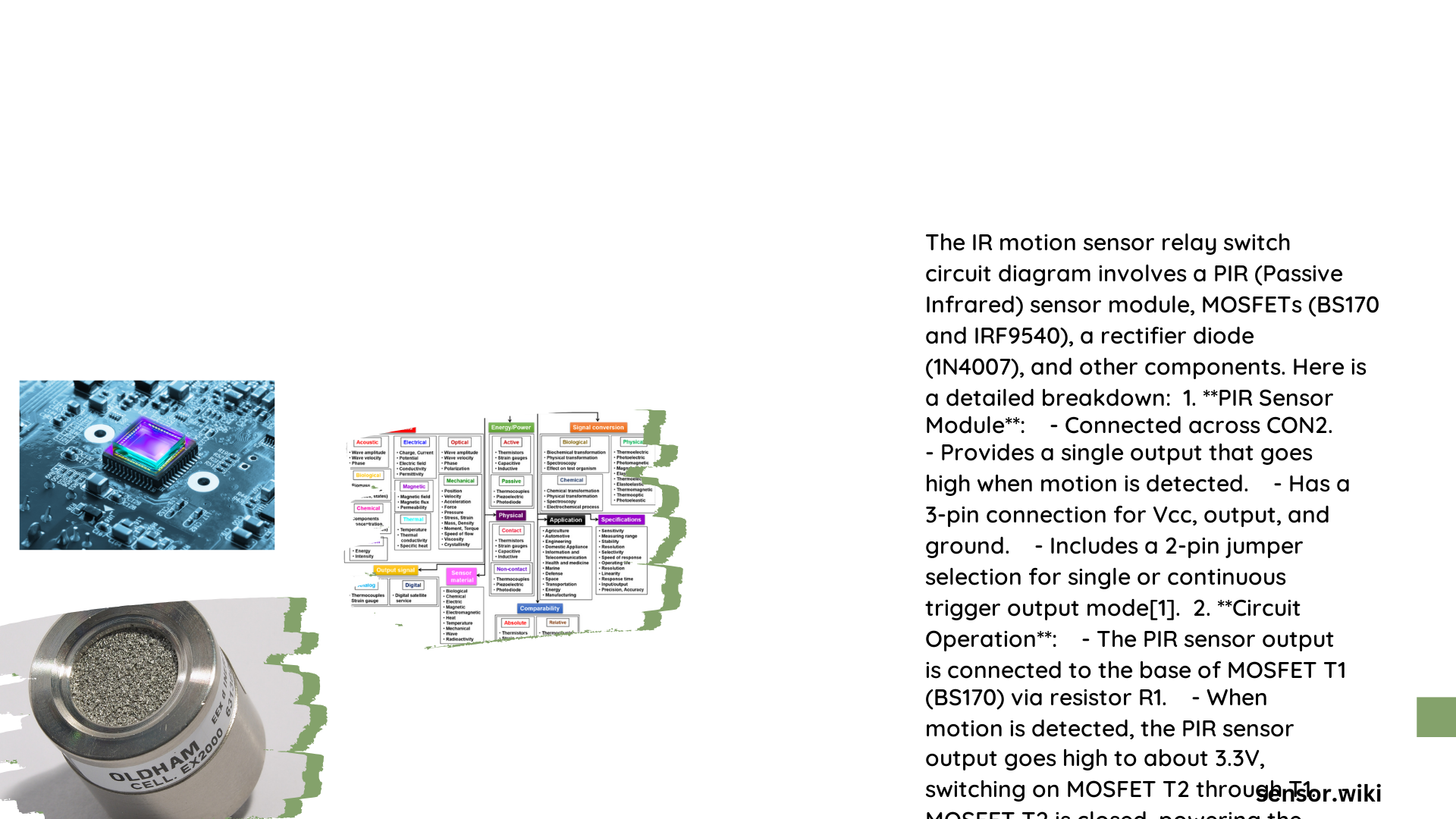An IR sensor with relay module circuit diagram represents a sophisticated electronic interface that enables automated switching mechanisms through infrared motion detection. This advanced circuit combines passive infrared sensor technology with electromechanical relay systems, allowing precise environmental monitoring and automated control across various applications like security systems, home automation, and industrial control mechanisms.
What Are the Essential Components for IR Sensor Relay Circuit?
Key Components Overview
| Component | Specification | Function |
|---|---|---|
| PIR Sensor | 3-pin module | Motion detection |
| Relay Module | 5V/12V | Switching load |
| Transistors | BC547, IRF9540 | Signal amplification |
| Power Supply | 5-12V DC | Circuit powering |
Circuit Design Principles
The IR sensor relay module circuit fundamentally operates through a sequence of signal detection and amplification:
- Motion Detection
- PIR sensor generates electrical signal upon detecting infrared radiation changes
-
Sensitive to temperature variations in monitored area
-
Signal Amplification
- Transistor network (BC547, IRF9540) processes sensor output
-
Converts low-current sensor signal into relay-triggering voltage
-
Relay Activation
- Amplified signal triggers relay
- Enables/disables connected electrical load
How Does IR Sensor Detect Motion?

Infrared Detection Mechanism
Passive Infrared (PIR) sensors utilize specialized pyroelectric sensors that detect infrared radiation emitted by warm objects. When a warm object moves across the sensor’s detection zone, it creates a differential signal, triggering the circuit.
Detection Zone Characteristics
- Typical Range: 3-10 meters
- Detection Angle: 90-120 degrees
- Sensitivity: Adjustable through onboard potentiometer
What Are Recommended Wiring Techniques?
Precise Connection Strategy
PIR Sensor Module
Vcc --> Power Supply
GND --> Ground
OUT --> Transistor Base
Transistor Network
BC547 Collector --> IRF9540 Gate
IRF9540 Drain --> Relay Input
Relay Module
Input --> Transistor Network
Output --> Load Circuit
Protection Components
- Rectifier Diode: Prevents back EMF
- Filtering Capacitors: Reduces electrical noise
- Current-Limiting Resistors: Protects semiconductor components
What Troubleshooting Techniques Exist?
Common Circuit Challenges
- Incorrect Wiring
- Double-check component connections
-
Verify power supply compatibility
-
Signal Interference
- Use shielded cables
-
Implement proper grounding techniques
-
Component Failure
- Test individual components
- Replace damaged transistors/sensors
What Are Practical Applications?
Diverse Implementation Scenarios
- Home security systems
- Automated lighting controls
- Industrial motion detection
- Energy management solutions
- Smart building infrastructure
Recommended Best Practices
- Use high-quality components
- Implement proper heat dissipation
- Regular maintenance and calibration
- Follow manufacturer’s specifications
Performance Optimization Tips
- Adjust sensor sensitivity
- Select appropriate relay ratings
- Use temperature-compensated sensors
- Implement debounce mechanisms
Conclusion
The IR sensor with relay module circuit diagram represents a versatile electronic solution for automated sensing and switching applications. By understanding its fundamental principles, designers can create robust, efficient control systems across multiple domains.
